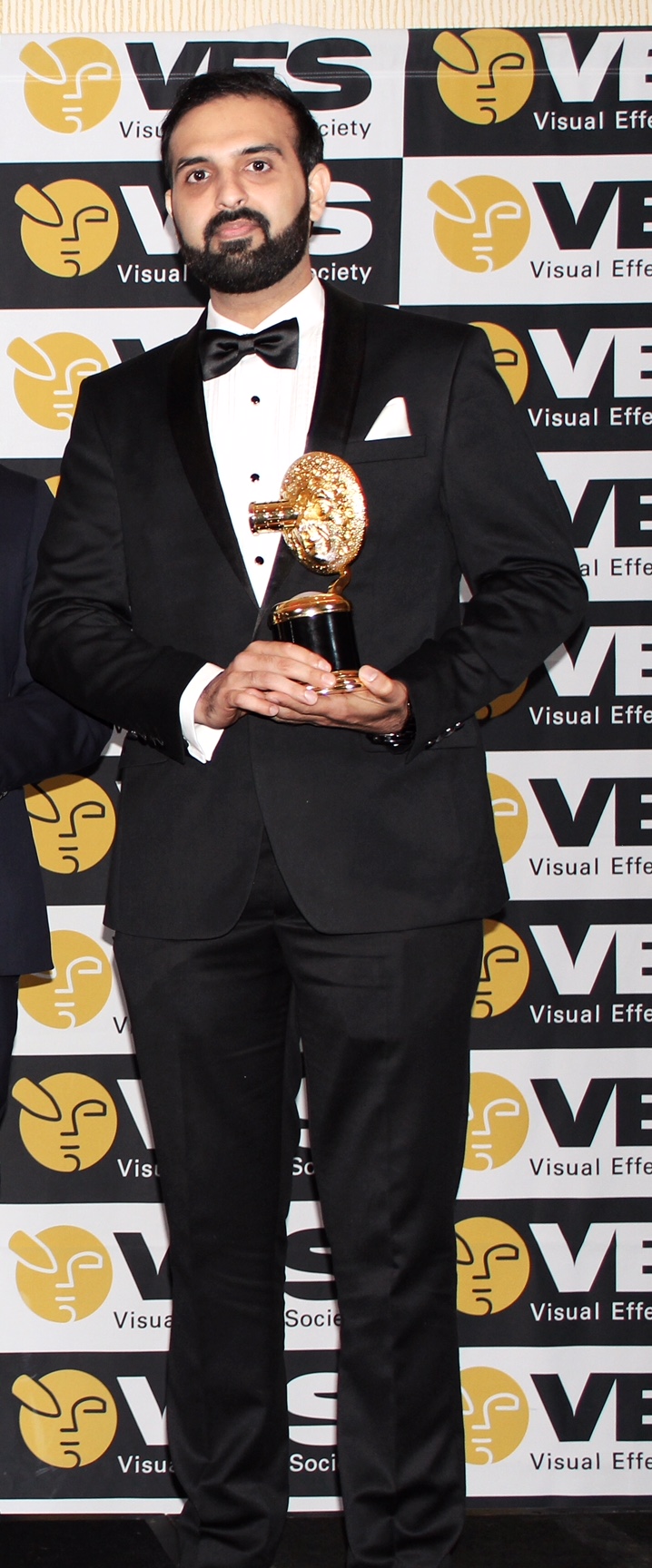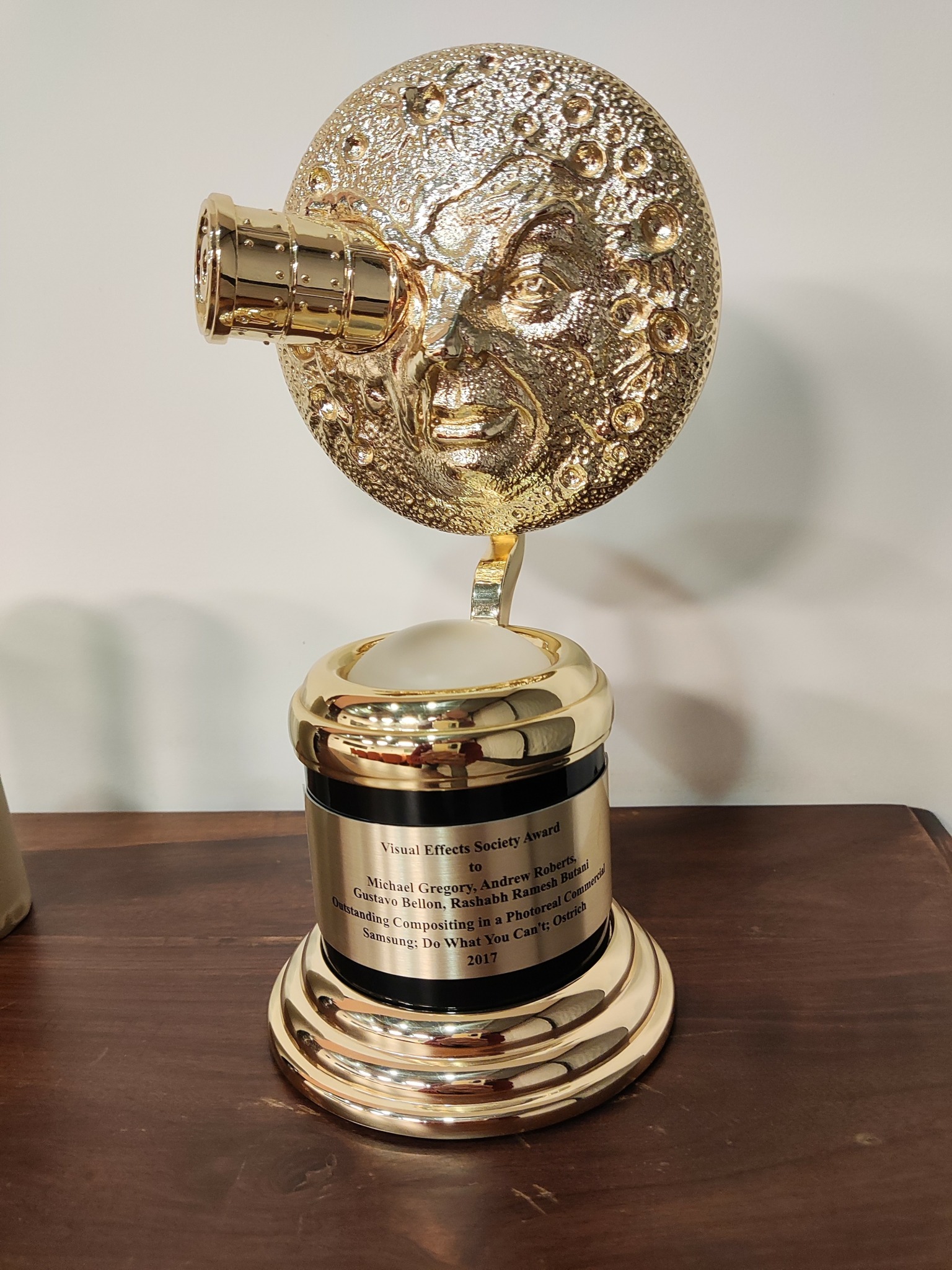We were lucky to catch up with Rashabh Butani recently and have shared our conversation below.
Rashabh, looking forward to hearing all of your stories today. Did you always know you wanted to pursue a creative or artistic career? When did you first know?
I have always been obsessed with sci-fi and fantasy films for as long as I can remember. There was something about those surreal worlds that always drew me in the way they made the impossible feel real. Even as a kid, I was constantly making up my own stories, inventing games, and letting my imagination run wild. I didn’t grow up in a particularly artistic environment, but creativity was always a big part of me.
In most Indian families, there’s a huge push toward careers in engineering or medicine, but my parents never forced that on me. Of course, at first, they naturally encouraged me to take up science as any Indian family would, but when I told them I wanted to do something creative, they completely supported me. That’s how I ended up studying and graduating in Mass Media with a major in Advertising.
The moment that really set everything in motion, though, was watching The Matrix. I was completely blown away. The bullet-time shots, the way everything felt so surreal yet so grounded, I was hooked. I must have watched that movie a hundred times, trying to figure out how they pulled it off. Back then, I had no idea what VFX even was, but I knew I wanted to be a part of something like that.
After graduating, I landed my first job as a Junior Art Director at a subsidiary of Leo Burnett called Orchard advertising. I worked on print campaigns for brands like BlackBerry, Godrej, and India’s Got Talent, but something just didn’t feel right. I enjoyed the work, but deep down, I knew I wanted to do something bigger, something in film. After doing some research, I finally discovered VFX and realized this was exactly what I’d been looking for. At the time, there weren’t many schools in India teaching it, but I found a diploma program in Mumbai that I liked and took the leap.
When I got my first VFX job at Rhythm & Hues India, I was both excited and nervous. I remember walking in for my interview wearing full formals, thinking that’s how it worked in any industry. Turns out, in a creative studio, nobody does that, I stuck out like a sore thumb! But everyone there was incredibly talented and welcoming, and my time at R&H became the foundation for everything I know about VFX today. The supervisors were amazing mentors, always teaching and pushing me to learn more.
One of the first big milestones in my career was seeing my name in the credits for Snow White and the Huntsman in 2012. I was sitting in the theater with my parents, and as the credits rolled, they scanned the screen until they found my name. My mom gasped, my dad’s eyes fully teared up it was one of those moments that just stays with you forever.
After R&H, I moved to London to work at Double Negative on Interstellar. That was a dream project working on a film that would go on to win an Oscar for Best VFX was surreal. From there, I transitioned into commercial VFX, spending eight years at MPC before moving to LA to join The Mill.
But the proudest moment of my career came in 2018 when I won a VES Award for Samsung’s “Do What You Can’t” campaign. That win meant so much because it felt like all those years of hard work had led to something truly special. It was a moment of validation, not just for me, but for all the people who had supported me along the way.
Now, after almost 15 years in the industry, I’m still loving every second of it. If you had told that kid watching The Matrix for the first time that one day he’d be working in VFX, he wouldn’t have believed you. But here I am, and the journey’s been absolutely worth it.

Rashabh, before we move on to more of these sorts of questions, can you take some time to bring our readers up to speed on you and what you do?
For folks who may not have read about you before, can you please tell our readers about yourself, how you got into your industry / business / discipline / craft etc, what type of products/services/creative works you provide, what problems you solve for your clients and/or what you think sets you apart from others. What are you most proud of and what are the main things you want potential clients/followers/fans to know about you/your brand/your work/ etc. Please provide as much detail as you feel relevant as this is one of the core questions where the reader will get to know about you and your brand/organization/etc
I’m Rashabh, a Compositing Supervisor/VFX artist with over 14 years in the industry, bringing stories to life through visual effects. My journey into VFX wasn’t something I planned from the start, but looking back, it feels like every step led me here. I’ve always been drawn to sci-fi and fantasy films. The Matrix being the one that truly changed everything for me. Watching that movie as a kid, I was in awe of how they made the impossible look so real. At the time, I didn’t even know what VFX was, but I knew I wanted to be part of whatever magic was happening behind the scenes.
After initially studying science (as most Indian kids do), I switched gears to Mass Media with a major in Advertising. My first job was as a Junior Art Director at a subsidiary of Leo Burnett, working on print campaigns for brands like BlackBerry, Godrej, and India’s Got Talent. But something was missing, I wanted to create visuals that moved, that told a story on a cinematic scale. That’s when I discovered VFX and took a leap, enrolling in a diploma program in Mumbai.
My first break in VFX came at Rhythm & Hues India, where I had the chance to work with some of the most talented and generous artists in the industry. That’s where I built the foundation of my career. From there, I moved to Double Negative in London, working on films like Interstellar, and then transitioned into commercial VFX, spending eight years at MPC before moving to Los Angeles to work at The Mill. Over the years, I’ve contributed to films like Life of Pi, Snow White and the Huntsman, Django Unchained, and Interstellar, as well as countless high-end commercials and branded content.
What I Do
At my core, I’m a storyteller. Whether it’s through high-end visual effects, animation, or creative direction, my goal is always to bring ideas to life in the most visually stunning and impactful way possible. My work spans feature films, commercials, immersive experiences, and cutting-edge digital content. I specialize in photo-real VFX Compositing, and now slowly gaining knowledge with AI-driven visual solutions, whether it’s compositing breathtaking environments, seamless digital doubles, or hyper-realistic product visualizations.
What Sets Me Apart
I think what really sets me apart is my ability to blend the technical with the creative. Many artists in VFX are either extremely technical or purely artistic, but I’ve always found myself bridging the gap between the two. I understand how to push the boundaries of what’s possible technically while ensuring that the creative vision remains intact.
One of my biggest strengths has always been speed without compromising quality. I’m an incredibly fast compositor, which has been a huge advantage, especially in the fast-paced world of advertising. Tight deadlines are the norm, and I’ve always been able to deliver film-level quality even under extreme time constraints. That ability to work quickly while still maintaining a high standard of work has been one of my key differentiators throughout my career.
I also have a deep understanding of commercial storytelling, how to balance cinematic visuals with brand messaging in a way that feels seamless and powerful. Whether it’s a Super Bowl commercial or a short-form branded film, I always aim to create work that not only looks stunning but also connects with audiences.
What I’m Most Proud Of
One of the biggest milestones in my career was winning a VES Award in 2018 for Samsung’s “Do What You Can’t” campaign. The Visual Effects Society Awards are like the Oscars of the VFX industry, so winning one was a surreal and humbling experience. But beyond awards, what truly makes me proud is seeing my work resonate with people, whether it’s a film credit that makes my family proud or a project that wows a client beyond their expectations.
What I Want People to Know
I want people to know that my approach is always about elevating the work beyond what’s expected. I love solving creative challenges, whether it’s figuring out how to make a shot work with limited resources or using new technology or new workflow to push creative boundaries.
Right now, I’m also exploring AI-driven tools in VFX like Comfy. I believe the future of VFX is not just in better visuals but also in making the process more efficient and accessible.
At the end of the day, I’m just someone who’s passionate about making great visuals, pushing creative boundaries, and collaborating with like-minded people who want to create something amazing. Whether it’s a major Hollywood film, a commercial, or even immersive content, I’m always looking for the next exciting challenge.

How can we best help foster a strong, supportive environment for artists and creatives?
For artists and creatives to truly thrive, there needs to be more structured support, recognition, and sustainable opportunities.
1. Valuing Creativity as a Profession, not a Hobby
One of the biggest challenges artists face specially in India is that creative work is often seen as a passion rather than a legitimate profession. Society needs to recognize that art, design, and storytelling are industries that drive billions of dollars, whether in film, advertising, gaming, or digital content. When artists are respected as professionals, they can command fair pay and better opportunities.
2. Better Industry Support
The creative industry is a dynamic and fast-paced field, and while it often involves tight deadlines and demanding projects, there are tremendous opportunities for growth and innovation. Companies can do even more to ensure that artists are recognized and fairly compensated for their incredible contributions. With the right support systems, like fair pay, ethical work conditions, and resources for professional development, artists can continue to thrive and push creative boundaries with much better stability
3. Embracing Technology Without Replacing Artists
AI and automation are changing the creative landscape, and while these tools can enhance the work process, they should be used to support the artists, not replace them. We need to have ethical conversations around technology in art, ensuring that creatives remain at the heart of storytelling, design, and expression.

What do you think is the goal or mission that drives your creative journey?
My dream is to eventually become a Creative Director and then move into directing commercials. I want to be able to deliver visuals from concept to execution. I have always been drawn visual storytelling, and being in LA has been incredible for getting closer to that. It’s given me the opportunity to work alongside some seriously talented people, and have worked closely with some amazing creative directors already which has definitely helped me sharpen my skills.
Contact Info:
- Website: https://www.rashabh.com
- Instagram: https://www.instagram.com/bluetimetravelbird/
- Facebook: https://www.facebook.com/rashabh
- Linkedin: https://www.linkedin.com/in/rashabh/
- Other: https://www.imdb.com/name/nm4930656/





